When you create a Power Automate visual in a Power BI report, your end-users can run an automated flow, just by clicking a button in your report. Furthermore, the flow can be data contextual, meaning that the flow inputs can be dynamic, based on the filters the end-users set.
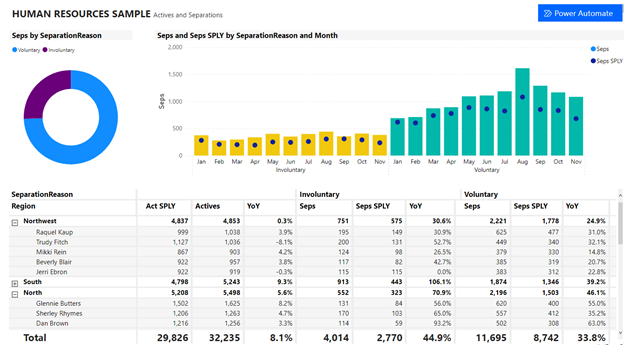
Add the Power Automate visual
- Select the Power Automate icon from the Visualizations pane.
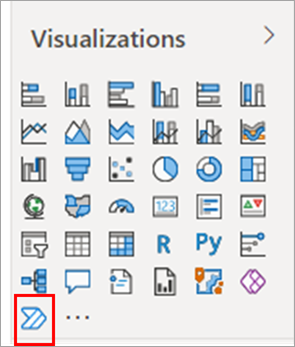
In Power BI Desktop, you can also add the visual from the ribbon. On the Insert tab, select Power Automate (preview) in the Power Platform section.

Once you select the visual, it automatically gets added to your current report page, with getting started instructions.
- Scroll, resize the visual, or select the Focus mode icon to see all the instructions.
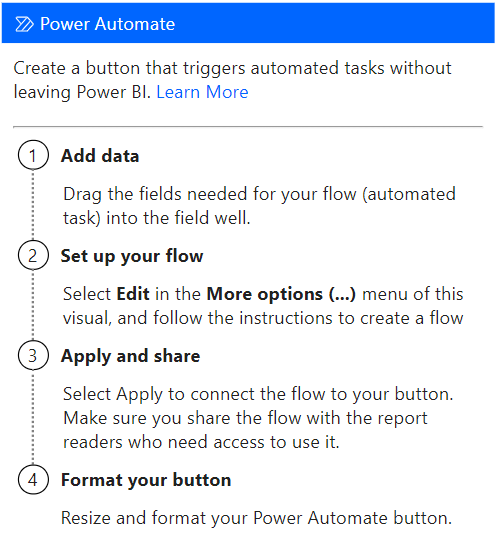
- After you’ve reviewed the instructions, resize the button and place it where you’d like on the report.
Edit the flow
- With the flow selected, add any data fields to the Power Automate Data region, to be used as dynamic inputs to the flow.
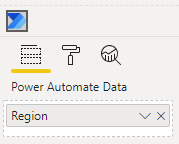
- Select More options (…) > Edit to configure the button:
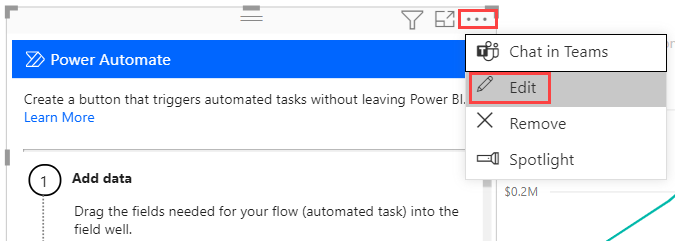
- In the edit mode of the visual, you either select an existing flow to apply to the button, or create a new flow to be applied to the button.

- You can start from scratch or start with one of the built-in templates as an example. To start from scratch, select New > Instant cloud flow:
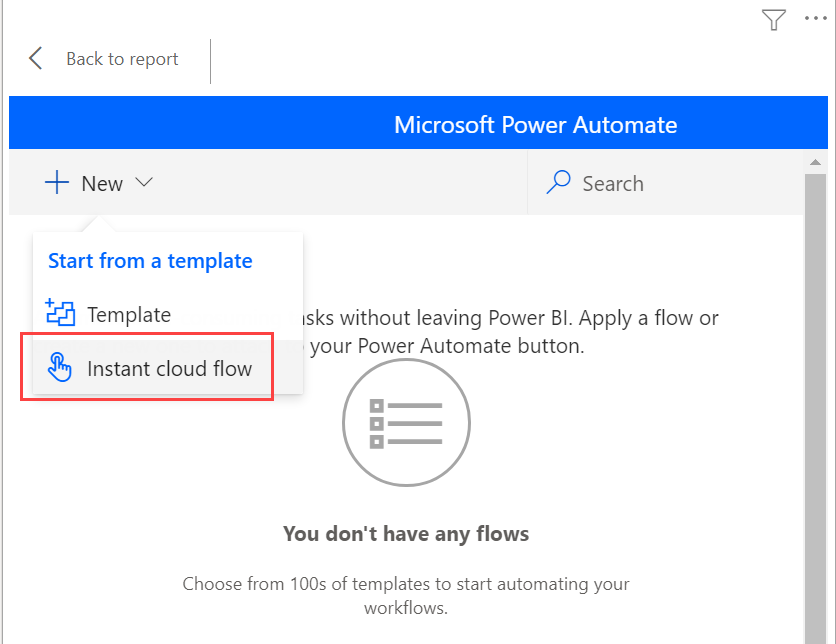
- Select New step.

- Here, you can choose a subsequent action or specify a Control if you want to specify additional logic to determine the subsequent action.

- Optionally, you can reference the data field(s) as dynamic content if you want the flow to be data contextual. This example uses the Region data field to create an item in a SharePoint list. Based on the end-user’s selection, Region could have multiple values or just one.

- After you’ve configured your flow logic, you can name the flow and select Save.

- Select the arrow button to go to the Details page of the flow you just created:

Here’s the Details page for a saved flow:
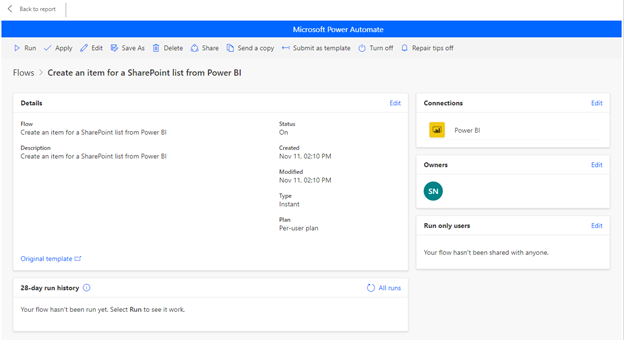
- Select the Apply button to attach the flow you’ve created to your button.
Format the flow
Optionally, you can change the button text, font color, font size, or fill color of the button. These options along with other settings are available in the Format pane:

Test the flow
After you have applied a flow to the button, we recommend testing it before you share the flow with others. These Power BI flows can only run in the context of a Power BI report. You can’t run these flows in a Power Automate web app or elsewhere.
If your flow is data contextual, you’ll want to test how the filter selections in the report impact the flow outcome.
- To test the flow in edit mode of the report, select Back to report, then press Ctrl while you select the button to run the flow.

The button text indicates that the flow has been triggered.
- To check if the flow has run successfully, select the More commands (…) menu > Details in the flow that has been triggered:
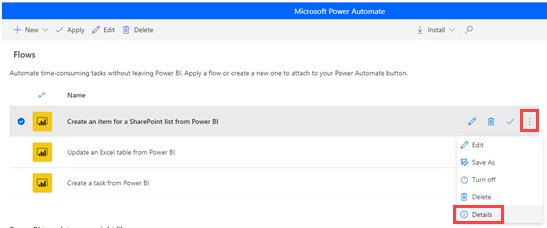
- On the Details page, you can see the run history and status for the flow:
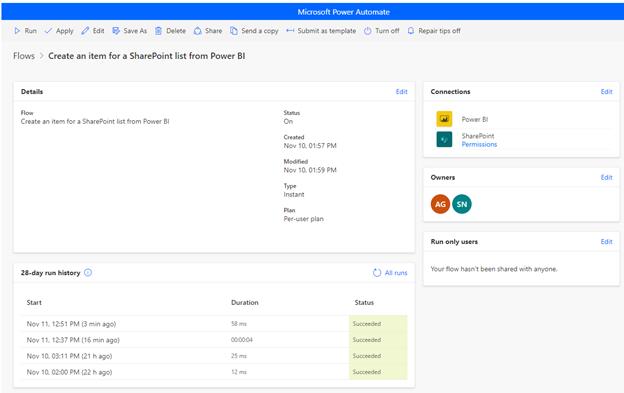
Share the flow
When the flow is running successfully, you can share it with your report readers.
- Select Edit in the Run only users section:

- Specify which users or groups you want to give run access to:
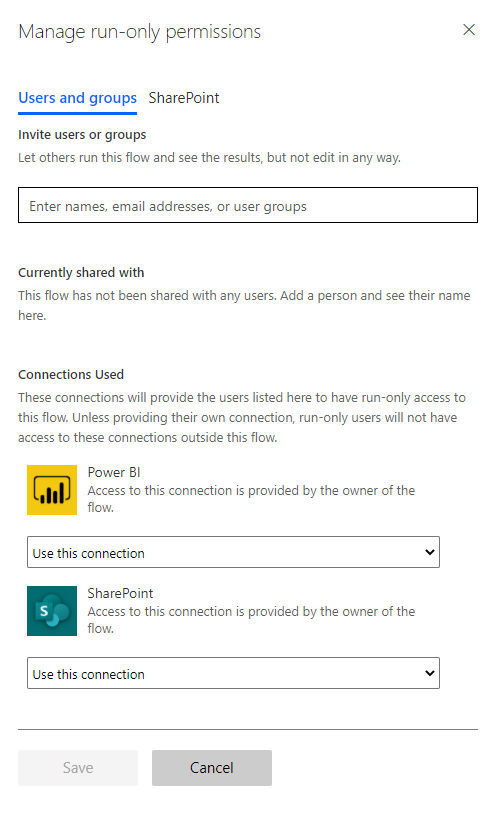
Give users edit access
Alternatively, you can give any users edit access to the flow, not just run permissions.
- Select Share , and specify the users or groups that you want to add as an owner:
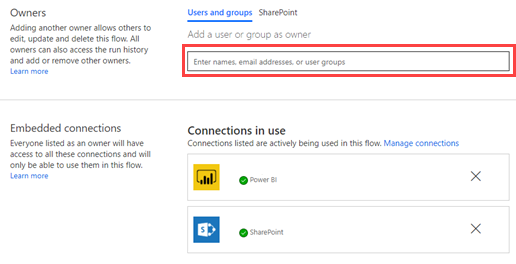
Limitations and considerations
- Additional manual inputs to the button aren’t supported at this time. We plan to add support for this by the general availability release.
- Currently, we only have a few built-in templates; we plan to add more based on user feedback.
- The visual isn’t supported for Paas embedded scenarios, nor in Sovereign Cloud scenarios.

